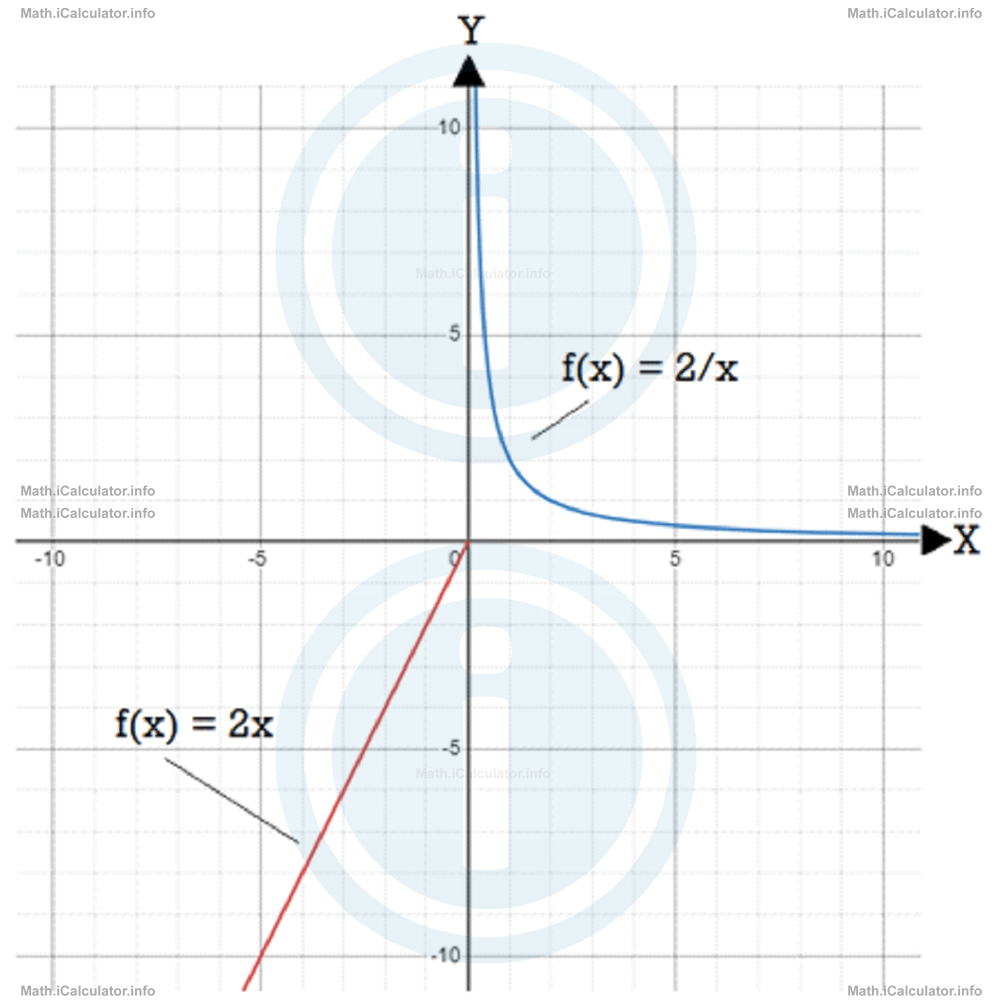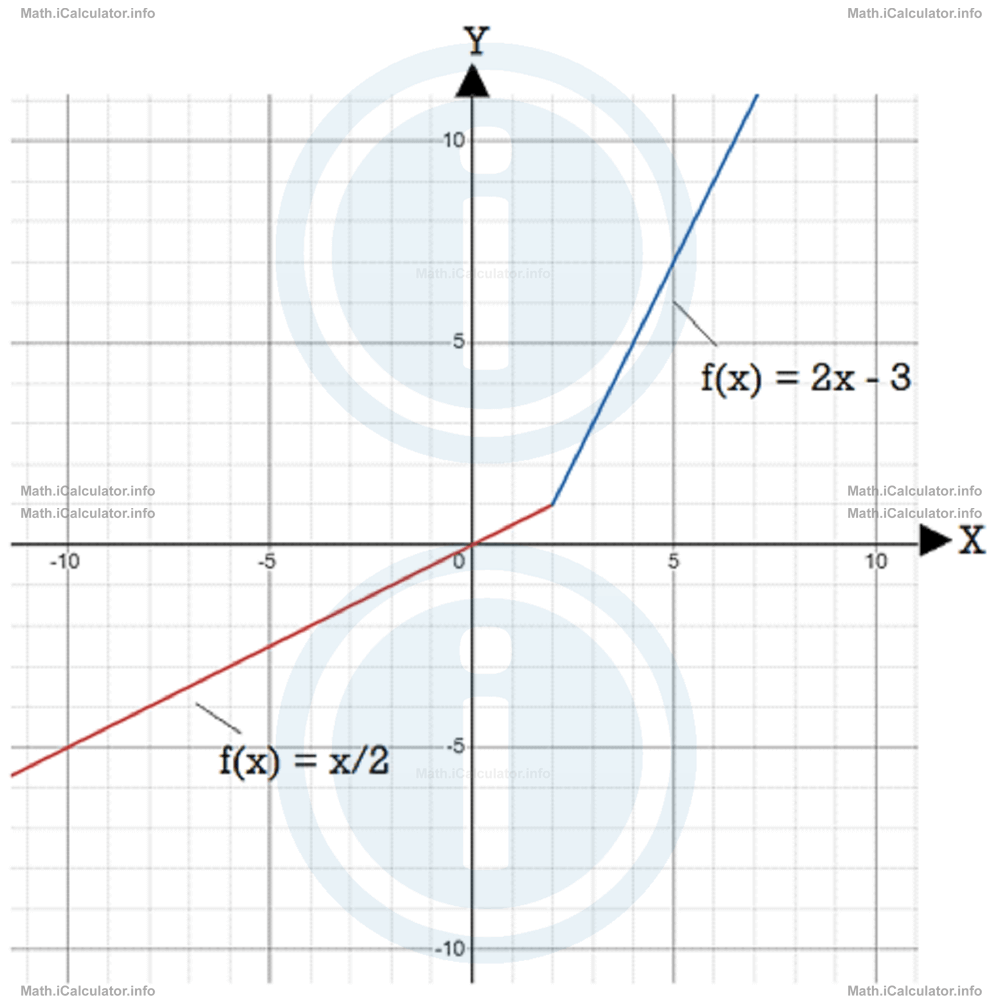Menu
Math Lesson 16.5.3 - Continuity of a Piecewise Function
Please provide a rating, it takes seconds and helps us to keep this resource free for all to use
Welcome to our Math lesson on Continuity of a Piecewise Function, this is the third lesson of our suite of math lessons covering the topic of Piecewise Functions, you can find links to the other lessons within this tutorial and access additional Math learning resources below this lesson.
Continuity of a Piecewise Function
Some functions are undefined for certain values of the independent variable x. For example, the reciprocal function f(x) = 1/x is not defined for x = 0 as the division by 0 is not allowed in the set of real numbers. We have seen that the graph of such a function contains two different parts that have no common points, i.e. they are not connected with each other.
Basically, there are two types of functions in regard to their graph: continuous and non-continuous. By definition, a function is continuous if its graph has no interruptions. In other words, if you can plot a graph without taking your hand off the sheet, then you are dealing with the graph of a continuous function. If you have no other choice but to sketch the graph in two or more steps by taking off the hand from the sheet, then you are dealing with a non-continuous function, where both the domain and range are obtained by considering two or more separate intervals in the corresponding axes. Look at the figure below where the graph of the piecewise function
is shown.

You can easily see that the two parts of the graph have no common points. This means this function is not continuous.
On the other hand, if we consider the piecewise function
is continuous because the two graphs converge at a common point (at x = 2). Look at the graph below.

How to know whether a Piecewise Function is Continuous or Not without Plotting the Graph?
You can check the continuity of a piecewise function by finding its value at the boundary (limit) point x = a. If the two pieces give the same output for this value of x, then the function is continuous. Let's explain this point through an example.
Example 3
Check the continuity of the following piecewise functions without plotting the graph.
- f(x) = 2x + 1 x ≥ 14 - x x < 1
- f(x) = 2 - 3x x ≥ 0x2 - 2x + 2 x > 0
- f(x) = 1 - x2 x ≥ -13 - 5x x < -1
Solution 3
- We must check the continuity of this function at x = -1. If the value of the two pieces at this point is equal, the function is continuous. Thus, for the top part of f(x) we have f(x) = 2x + 1and for the bottom part of f(x) we have
f(x) = 2 ∙ 1 + 1
= 2 + 1
= 3f(x) = 4 - xThus, since the two values of f(x) are equal, the function is continuous at x = 1.
f(x) = 4 - 1
= 3 - We must check the continuity of this function at x = 0. If the value of the two pieces at this point is equal, the function is continuous. Thus, for the top part of f(x) we have f(x) = 2 - 3xand for the bottom part of f(x) we have
f(0) = 2 - 3 ∙ 0
= 2 - 0
= 2f(x) = x2 - 2x + 2Thus, since the two values of f(x) are equal, the function is continuous at x = 1.
f(x) = 02 - 2 · 0 + 2
= 0 - 0 + 2
= 2 - We must check the continuity of this function at x = -1. If the value of the two pieces at this point is equal, the function is continuous. Thus, for the top part of f(x) we have f(x) = 1-x2and for the bottom part of f(x) we have
f(-1) = 1 - (-1)2
= 1 - 1
= 0f(x) = 3 - 5xThus, since the two values of f(x) are different at x = -1, the function is non-continuous at this point.
f(-1) = 3 - 5 ∙ (-1)
= 3 + 5
= 8
You have reached the end of Math lesson 16.5.3 Continuity of a Piecewise Function. There are 6 lessons in this physics tutorial covering Piecewise Functions, you can access all the lessons from this tutorial below.
More Piecewise Functions Lessons and Learning Resources
Whats next?
Enjoy the "Continuity of a Piecewise Function" math lesson? People who liked the "Piecewise Functions lesson found the following resources useful:
- Continuity Feedback. Helps other - Leave a rating for this continuity (see below)
- Functions Math tutorial: Piecewise Functions. Read the Piecewise Functions math tutorial and build your math knowledge of Functions
- Functions Revision Notes: Piecewise Functions. Print the notes so you can revise the key points covered in the math tutorial for Piecewise Functions
- Functions Practice Questions: Piecewise Functions. Test and improve your knowledge of Piecewise Functions with example questins and answers
- Check your calculations for Functions questions with our excellent Functions calculators which contain full equations and calculations clearly displayed line by line. See the Functions Calculators by iCalculator™ below.
- Continuing learning functions - read our next math tutorial: Inverse Functions
Help others Learning Math just like you
Please provide a rating, it takes seconds and helps us to keep this resource free for all to use
We hope you found this Math tutorial "Piecewise Functions" useful. If you did it would be great if you could spare the time to rate this math tutorial (simply click on the number of stars that match your assessment of this math learning aide) and/or share on social media, this helps us identify popular tutorials and calculators and expand our free learning resources to support our users around the world have free access to expand their knowledge of math and other disciplines.